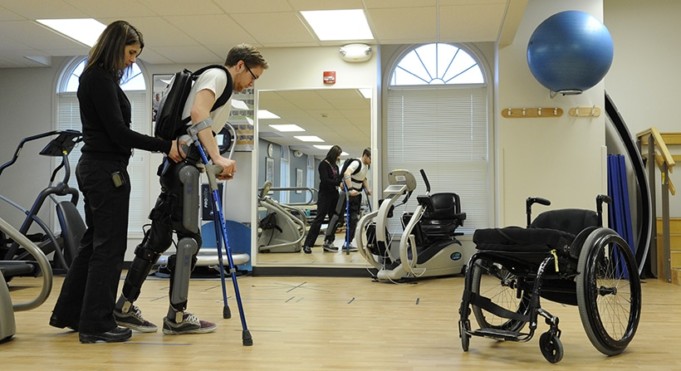A triathlete, Susan was accustomed to pain. The writer and mother of two ignored the pain she felt in 2015. But when her legs became numb, she knew she needed to get some help and relief.
Tests indicated a tumor had grown on her spine and was the source of the back pain she had endured through sleepless nights, pain-wracked days; work became a challenge to get through.
After several surgeries and weeks of radiation treatments, she believed she had made it past the worst of it. Spending three weeks in a medical rehab hospital while her strength improved, she was walking with a walker until she was discharged.
Continuing outpatient physical therapy sessions helped move her to crutches and then to a cane. Sometimes she was able to take short walks around the house without any devices, and she was happy with her recovery.
“I was looking forward to getting out,” says Susan. “I bought a recumbent bike and our family starting riding again.” Several months later, she became weaker, and before she could finish her latest book, she was back in a medical rehab hospital — again with her walker. Then, radiation myelitis reduced her mobility to a wheelchair again.
Radiation myelitis is a rare condition which can follow radiation therapy. Susan was floored. “I just wanted to sweat once more,” she told family and friends. When she heard about an intensive, specialized program for persons with a neurological injury, Susan was interested.
The program — five hours a day, three days a week for six weeks — provided her with physical therapy and a personal trainer for one-on-one therapy. Group time brought everyone together to share victories and challenges. The icing on the cake was a weekly education session which provided tips for living with a disability.
“The program was terrific,” Susan recalled recently. “As someone who craves exercise, I need to feel strong again.” Getting back your life on your terms is what the program is all about. The staff provides clients with the tools to improve function as they increase strength levels.
The weekly education sessions focus on education in topics as varied as traveling with a wheelchair, and nutrition. Collateral benefits include a reduction in pain and medication, improved sensation, and better posture. Each client sets their own goals, and is supported and encouraged to reach them.
“The schedule was personalized to match my needs,” Susan remembers. What she needed was different than other clients’ needs. Susan’s goal was to improve upper body strength, and she reached her purpose. “I want to get a hand bike to return to exercising with my family.”
Feeling a public gym would be too much, Susan joined the Wellness Program at the medical rehab hospital, where she could enjoy a supportive atmosphere while she continues to set — and achieve — goals.
The Takeaway
The Wellness Program was, for Susan, perfect. “When I’m there, I’m enjoying the best part of my day.”












